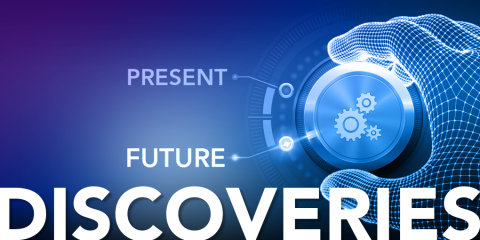Search
Contact Us
AI Makes It Possible (Blog Series)
Constant Learning Improves AI Recommendations
Access the On-Demand Webinar Playbackof “How AI-Enabled Super-Agents Improve CX” with Kate Leggett,Vice President and Principal Analyst Service Application Development and Delivery, Forrester Research, with Steve Nattress, Director, R&D AI Insights – Vecko and Jacki Tessmer, Vice President – Product Marketing, Enghouse Interactive.
Blog #3 of 4 With context, AI seeks to improve more quickly than ever.
As discussed in the last blog, we noted that a key area of focus should be on Natural Language Processing (NLP) where “Conversational Analytics” can become the differentiating factor, helping AI delivering the best possible solution today, and even better solutions tomorrow.
Why?
It’s all in the approach and how the data is analyzed. This is foundational to understanding causality.

Interesting Reading: Wired Magazine Article:
An AI Pioneer Wants His Algorithms to Understand the ‘Why’
Over time, a broader focus can and will help to better correlate the interplay of multiple variables to understand – from a situational perspective – what can be done to deliver more value and to quickly propose relevant solutions to the issues that customers have.
Gathering. Aggregating. Assessing. Analyzing all feedback via AI
Customer Feedback takes many forms and most are relatively static and easily processed – surveys, feedback forms, polling questions, correlated to the customer’s continuity of purchases. But, relying on that only provides one dimension (layer) of an answer. The real data is buried in the commentary from each and every conversation that takes place. Be it as part of a query, on a call, buried in the CRM system, or posted to social media or online groups/forums. These are examples of increasingly diverse and discrete information sources that provide potentially more valuable information – especially when taken as a whole for each discrete customer and when all customer feedback is grouped together. By recording, assessing, analyzing, and then aggregating all data from each customer engagement and then doing the same with the data from all your customer engagements, will provide a robust baseline of information to work from.
Recording – both voice and digital communications should be captured in real-time for agent support. With key-word analysis and indexing used to trigger KB document searches, along with presentation to agents and dissemination to the customer (in the format they prefer) helping to ensure more comprehensive support is provided while improving first call resolution (FCR) and driving support time reductions.
Assessing – using an industry-specific lexicon, with relevant expressions and phraseology, and word combinations, mapped against when they are used and how provides a solid baseline. Being sensitive to the intonation, phrasing, directness, repetition, and various stress indicators also provide a substantive layer of context to the information gathered. Ignore it at your peril. With many agents not being generalists versus industry experts, this ensures missteps are minimized, or optimally, eliminated.
Analyzing – is best undertaken by way of Linguistic Analysis. Using specialized algorithms along with the previously mentioned industry-specific terminologies and phraseologies, plus additional standardized baseline data sets, AI-enabled platforms can then ‘listen’ to conversations to specifically understand what is being said, how and why.
With additional algorithms and speech pattern recognition and tone analysis, AI can also help identify the customer’s overall sentiment regarding the current situation at hand. By leveraging the situational intelligence gathered, and blending it with past customer choices (made in the same or similar situations), AI can then recommend solutions – to agents or the customer directly – that have the highest probability of resolving the problem.
With a dedicated focus on ensuring that this feedback loop is continually optimized, AI will increasingly be able to propose combinations of actions, in the best possible sequence for every situation, from an ever-increasing range of options, resolving situations with reduced customer aggravation and time spent.
Optional: Interestingly this capability – an element of voice-biometrics – can also be used as an additional level of customer account security, helping to identify if a customer is being forced to place some type of sensitive transaction or if they truly are who they say they are.
By extension, Al is also an excellent tool to determine if a customer is under stress of some sort or not, providing an additional indication of whether they are ready to, or contemplating, leaving (churn).
New Data. Refining the Models.
Ultimately, the objective is ensuring that there are no longer any potential ”Pomponette” situations (review “La Femme du Boulanger (The Baker’s Wife)” movie clip from blog#2) with any customer interactions, so that that is being said is completely understood no matter how it’s being said. Be it directly, sarcastically, satirically, or using transference with inference to convey the real message.
Keep in mind that, in order to properly contextualize the customer’s experience, it should be looked at as a singular experience against the aggregate of all customer interactions – and then as part of a collective group experience, in order to be able to improve everyone’s journey. Agents can’t do that themselves.
Insight comes from Reinforced Learning and Control. Using fully aggregated data.
In summary, viewing the customer journey holistically ensures that the organization can better understand what meets the customer’s expectations and most importantly, what isn’t, enabling the organization to better align their entire enterprise to deliver value to both customers and the business.

Watch for our next blog on October 22nd:
Key Learnings from our Webinar with Kate Legget of Forrester
Help make sure your organization delivers the customer experience that exceeds their expectations. Doing so, will transform your contact center from a cost-center into a revenue generator.
Access the On-Demand Webinar Playback of “How AI-Enabled Super-Agents Improve CX” with Kate Leggett, Vice President and Principal Analyst Service Application Development and Delivery, Forrester Research, with Steve Nattress, Director, R&D AI Insights – Vecko and Jacki Tessmer, Vice President – Product Marketing, Enghouse Interactive.
See how your organization can benefit from AI-Enabled Super-Agents
Published In
AI Enghouse Interactive Educates digital transformation Webinar Contact Center Enterprise Contact Center Service Provider Communications Center customer support social media webchat CCaaS multi-tenant Unified Communications Whitepaper call handling quality management employee morale compliance Partners Integration & Optimization Service Provider Cloud-Based Contact Center Contact Center Solutions MediaVoice Microsoft Enghouse Interactive IVR/Self-Service call recording dispute resolution workforce management zz-General workforce optimization voice of the customer speech analytics contact center optimization quality monitoring Contact Center Customer Experience Omni-Channel VideoThank you!
You have successfully subscribed to our newsletter.
Sign up here to watch your selected video as well as gain access to the other videos listed here
Sign up here to watch your selected video
Sign up here to watch the videos as well access to more Tips 'N' Tricks videos
Get your free download


